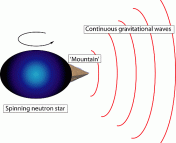This is the fifth installment of our series featuring research done by undergrads. If you missed out on previous posts in this series, you can check them out here:
UR#1: Gamma-Ray Bursts and Protostars
UR#2: Near-Earth Objects and Hot Stars
UR#3: Star Clusters and Shock-Heated Gas
UR#4: Galaxy Distribution and Solar Oscillations
You can share what you’re doing too by clicking on the “Your Research” tab above (or clicking here) and using the form provided to submit a brief (fewer than 200 words) write-up of your work. The target audience is one familiar with astrophysics but not necessarily your specific subfield, so write clearly and try to avoid jargon. Feel free to also include either a visual regarding your research or else a photo of yourself!
We look forward to hearing from you!
************
 Josh Speagle
Josh Speagle
University of Wisconsin-Milwaukee, Harvard College
The X-ray Counterpart of PSR J0726-2612
Middle-aged, cooling neutron stars are observed both as relatively rapidly spinning radio pulsars and as more slowly spinning, strongly magnetized isolated neutron stars (INSs), which stand out by their thermal X-ray spectra. The difference between the two classes may be that the INSs initially had much stronger magnetic fields that have decayed. To test this, we used the Chandra X-ray Observatory to observe 1RXS J072559.8-261229, a possible X-ray counterpart to PSR J0726-2612, the nearest and least extincted among the possible slowly-spinning, strong-field INSs (likely in the Gould belt, at ~1 kpc). We confirm the identification and find that the pulsar has a spectrum consistent with a pure blackbody and detect sinusoidal pulsations at twice the radio period. The properties of PSR J0726-2612 strongly resemble those of the INSs, except for its much shorter characteristic age of 200 kyr (rather than several Myr). We conclude that PSR J0726-2612 is indeed an example of a young INS — one that started with a magnetic field strength on the low end of those inferred for the INSs and, therefore, has decayed by a relatively small amount. Our results suggest that long-period, strong-field pulsars and INSs are members of the same class.
Emma Broming
Rollins College, working with Christopher Fuse
The X-ray Evolution of Isolated and Compact Galaxy Systems
The origin of isolated elliptical and fossil group galaxies is a highly debated and ongoing field of study in galactic evolution. Previous investigations have examined the diffuse X-ray gas of isolated systems as a method of determining a galaxy’s probable evolutionary precursors. We propose that X-ray gas and point sources can be used as indicators of the history of these systems. Studying the X-ray emission from diffuse hot gas and point sources reveals a distribution of matter far different from that of visible light images. Previous research by Fuse et al. (2010) demonstrates that a combination of X-ray gas and point sources can be used as a new indicator of the evolutionary state of a Hickson compact group (HCG). It has been postulated that the galaxy members of compact groups will interact and merge, resulting in an isolated elliptical galaxy (Vikhlinin et al. 1999). Additionally, we propose that fossil groups of galaxies are the remnants of fully coalesced poor clusters. The current study presents an in-depth investigation of the X-ray properties of isolated elliptical galaxies, fossil groups, and poor clusters.

The X-ray point source luminosity vs X-ray gas luminosity relation. The FGs and poor clusters are displayed as green squares and purple squares, respectively, (right panel) and the HCGs are denoted by red squares and the isolated ellipticals are displayed as purple squares (left panel).
************
Many thanks to Josh and Emma for their contributions!




Do you think discovering a quantum structure to the motion of binary stars significant to Astronomers?